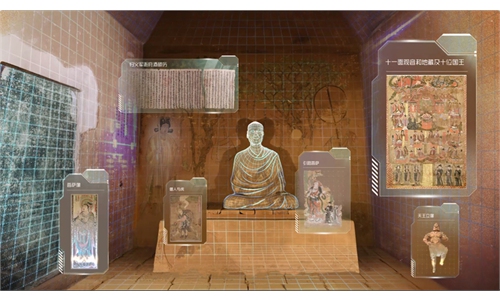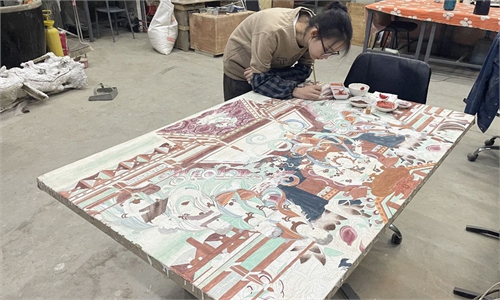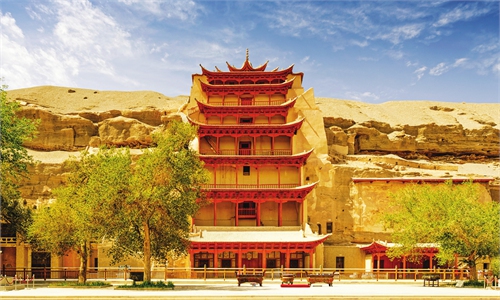Veteran archeologist dedicated to protection, study of Dunhuang's treasures thanks to favorable policies, cutting-edge tech
Editor's Note:
Who is the Communist Party of China (CPC)? What is the CPC's role in the new era?
The CPC has grown into one of the largest parties in the world in the process of leading the Chinese people in seeking liberation and happiness, making China as strong and prosperous as it is today.
As the CPC ushers the nation into a new era of development, the last decade has witnessed great achievements in national strength and prosperity, with people's confidence and recognition of this path rising to unprecedentedly high levels.
With more than 96 million members, the CPC will convene its 20th National Congress in October, which is expected to guide the country's development and policymaking. Ahead of the meeting, the Global Times is publishing a series of stories to help the world understand the CPC in the new era, through the stories of CPC members working on the frontlines of various fields, as well as through observations made by respected scholars.
This installment tells the story of an archaeologist who works on the frontline of the Gobi Desert to study and protect the Mogao Grottoes, a world cultural heritage site, in Dunhuang, Northwest China's Gansu Province, which was not only once an outpost on the ancient Silk Road, but also a rich treasure trove of art and history.
In the last decade, thanks to the favorable policies and modern scientific technologies, the archaeological work in Dunhuang has been greatly supported and developed under the leadership of the CPC.
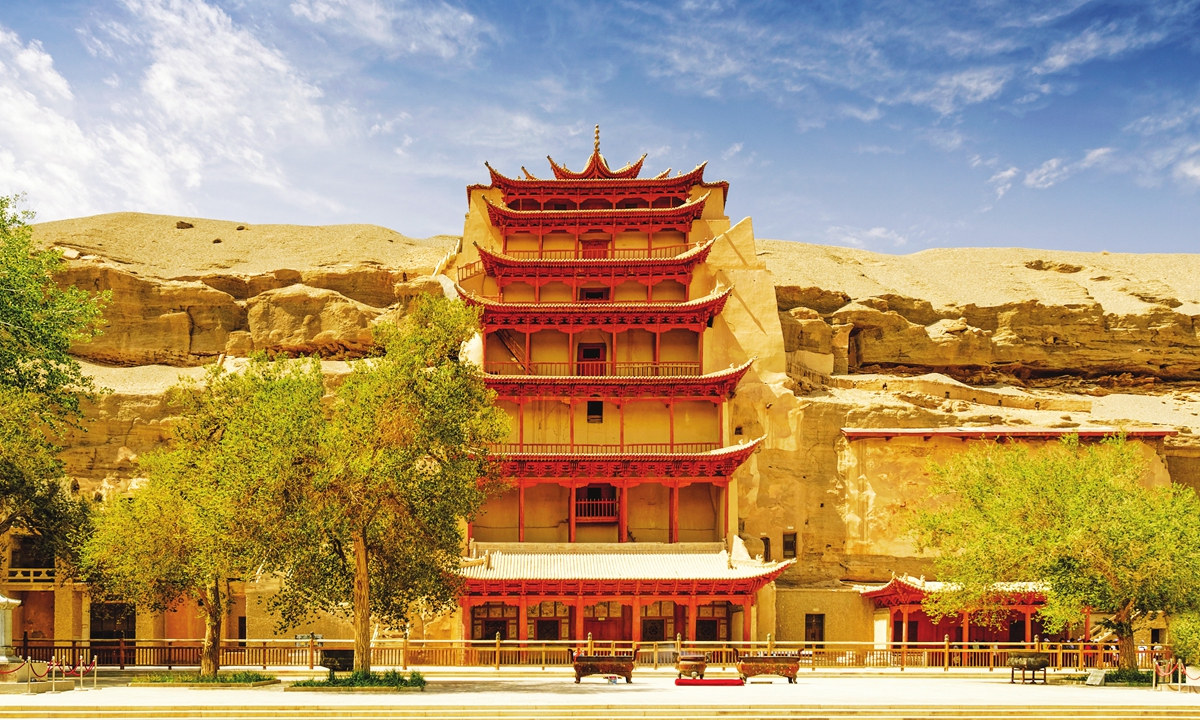
In 2000, this young man, who had just graduated from university and had never traveled far, joined the CPC less than a year ago, and had no idea that he would be based in one of China's toughest landscapes for so long for archaeological purposes.
Now, looking back, as the director of Archaeology Institute of Dunhuang Academy in Northwest China's Gansu Province, Zhang does not regret his original decision, especially when seeing the progress made in Dunhuang and China's archaeological field in the last decade.
"The flourishing development of Chinese archaeology is worth us pursuing research and conservation work as a lifelong career, no matter where we are, to seek academic breakthroughs, gaining the respect and recognition of the international academic community in our own research fields, and also integrating our life ideals into the cause for the nation, making our due contributions to the great rejuvenation of the Chinese nation," he said.
Achieving brilliance
Zhang still remembers the suffocating feeling of being under the scorching sun and whipped by sandy wind while conducting field archaeological research in the desert. "We often turned into 'dirt man' when we arrived at the excavation sites in less than half an hour - unable to open our eyes, mouth, and nostrils because they were full of sand. But I told myself that this was the norm for my work; I needed to accept such tests and tribulations to get into the role of a real archaeologist and gain experience as soon as possible," Zhang told the Global Times.
At that time, he was determined to stay at Duhuang for three years, and once he made a few academic achievements, he would return to Wuhan to seek other development pats and goals.
Over the next three years, Zhang's down-to-earth attitude and seriousness earned him praise and unselfish guidance from the older ranks of Dunhuang archaeologists such as Fan Jinshi and Peng Jinzhang, which enabled him to progress quicker in his career path and assume more responsibilities.
Dunhuang is home to the Mogao Grottoes, a renowned UNESCO World Heritage Site boasting rich collections of Buddhist artwork - more than 2,000 colored sculptures and 45,000 square meters of murals - in 735 caves along a cliff, which symbolizes the great achievements of China's Buddhist art from the 4th to the 14th century, presenting the cultural integration and mutual learning among the diverse civilizations along the ancient Silk Road.
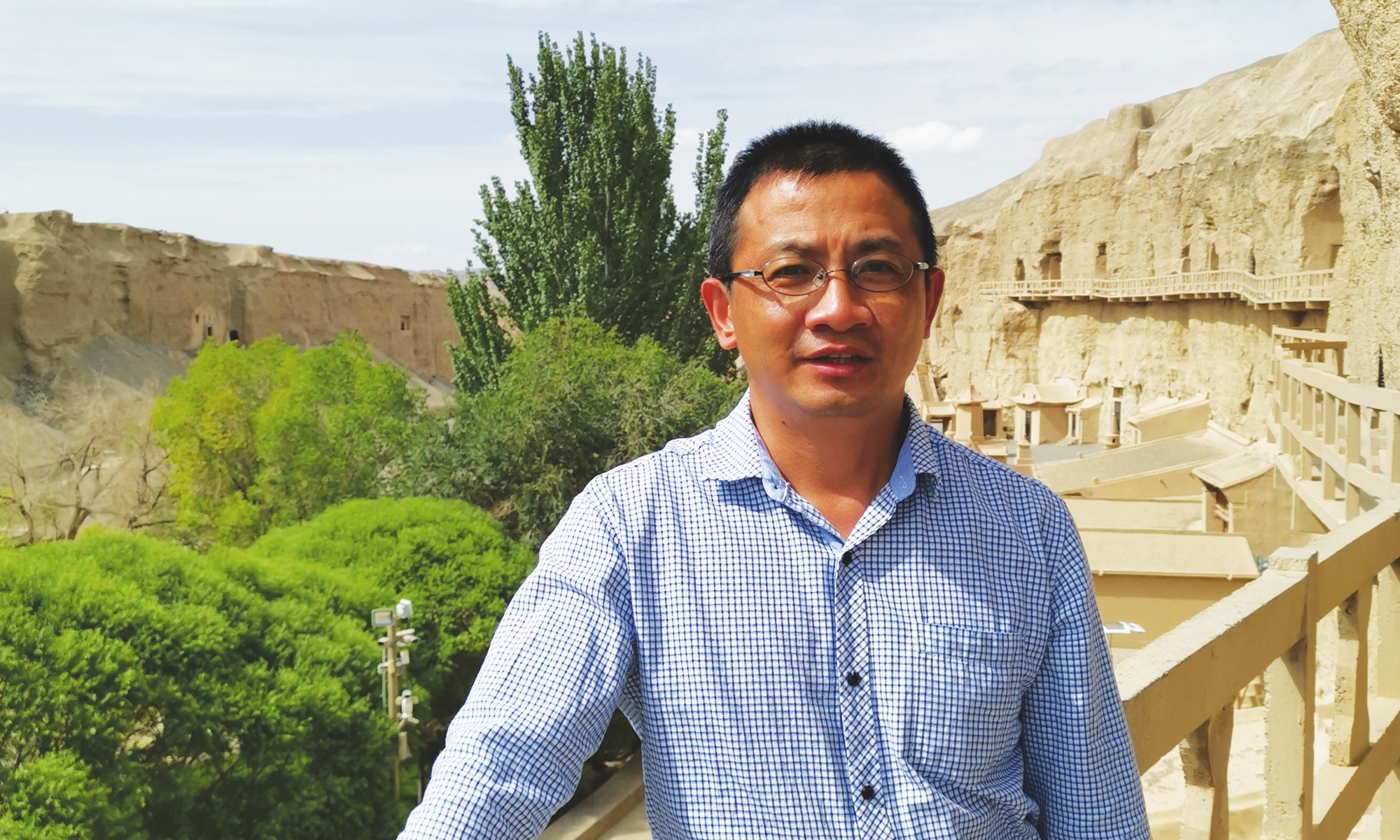
In 2011, the first volume of the archaeological reports on the Dunhuang Grottoes was published by Fan, a first-generation archaeologist at the Dunhuang Academy, and her team. It is the first comprehensive Dunhuang grottoes archive in China, providing scientific guidance for the cave restoration of the Mogao Grottoes, and playing an exemplary role in the grottoes' archaeological research circles.
In April 2022, China's National Cultural Heritage Administration issued a special plan for archaeological work during the 14th Five-Year Plan period (2021-25), calling for further publication of archaeological reports on major grottoes such as the Dunhuang, Yungang, and Longmen Grottoes. In Dunhuang, Zhang is leading a relay team to carry out this work.
Spirit passing down
It is a really difficult task. Before a detailed and qualified archaeological report of the Mogao Grottoes can be presented, thousands of Buddha statues of different shapes and styles need to be individually identified and documented by archaeologists while some of the damaged murals require more time to review and verify.
However, Zhang and his team have always weathered the difficulties and tediousness, racing against time but moving forward with the compiling work in a solid and patient manner.
At the Dunhuang Academy, this spirit has been passed on and has fueled the progress, development, and growth of this research institute.
"This is also closely related to the inspiration and leadership of the CPC," Zhang said.
Zhang had served as secretary of the Party branch of the Dunhuang Academy that is in charge of the entire archaeological discipline, exhibition planning, and other operations, in which he has witnessed the selfless dedication of many Party members in various positions to collaborate in the preservation and promotion of Dunhuang's culture.
Zhang always remembers the day when Chinese President Xi Jinping visited Dunhuang in August 2019.
Xi, also the general secretary of the Communist Party of China Central Committee and chairman of the Central Military Commission, called for well preserving the quintessence of Chinese culture.
He stressed the need to help carry forward and promote traditional culture, according to the Xinhua News Agency.
He also called for more efforts in cultural exchanges with other countries and learning from the outstanding achievements of civilizations from around the world.
Dunhuang's culture shows the Chinese nation's confidence in its culture, Xi said. "Only a self-confident civilization can absorb and draw on the achievements of other civilizations while maintaining its own characteristics."
Xi also encouraged workers in the cultural sector to tell the stories of Dunhuang and China well.
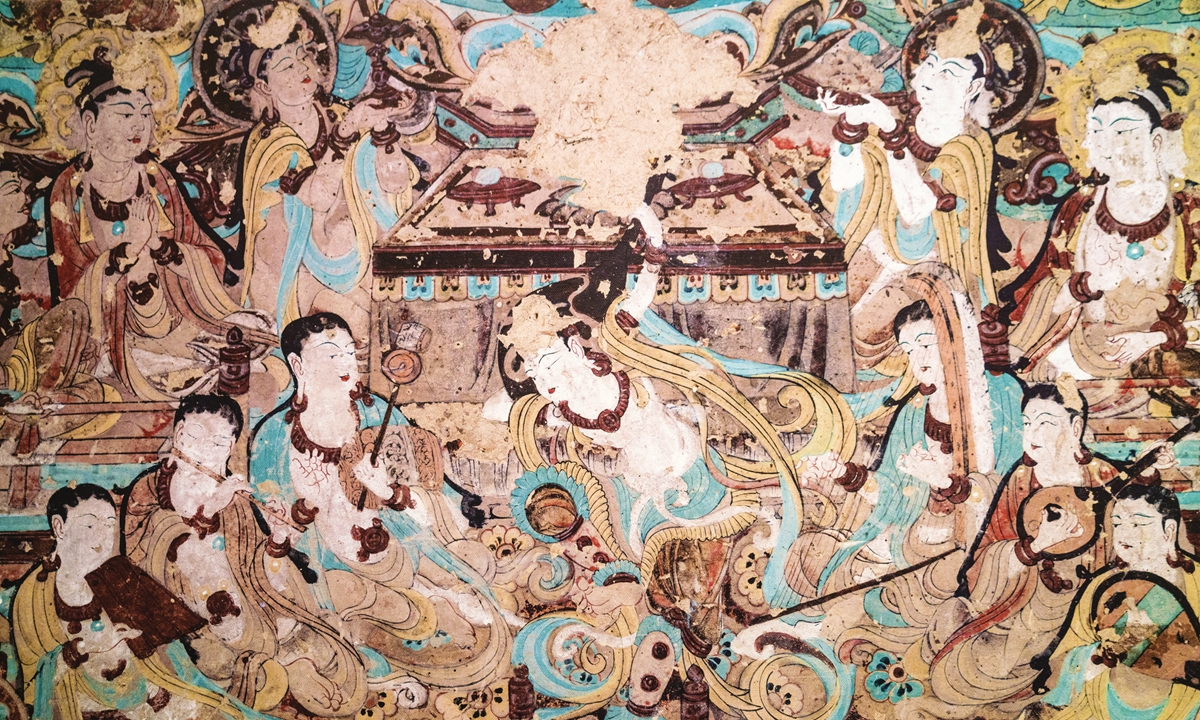
New development in decade
Zhang has also witnessed the rapid development of archaeology at Dunhuang and even throughout China in the last decade.
Zhang cited the digitization of the Mogao Grottoes in Dunhuang as an example, mentioning that in the early 1990s, the Dunhuang Academy began to try to use digital means to preserve the information of the heritage, from the beginning of still depending on manual surveys to the introduction of a US architectural engineering firm's three-dimensional laser scanning technology, to currently, with the support of the Party and state, after several years of development, the Dunhuang Academy's own Institute of Cultural Relic Digitalization has endeavored to solve problems in the process of practice, leading the development of technologies and making innovations.
In the last decade, the academy has developed a scientific set of digital techniques for mural paintings and sculptures, developed 14 technical standards and specifications for the digital protection of cultural relics, and obtained 45 authorized patents. Moreover, over the last decade, the Dunhuang Academy has continued to strengthen the ability to innovate in science and technology, out of a characteristically strong technology cave conservation plan. At the same time, until now, the Dunhuang Academy has continuously carried out various forms of cooperation with more than 30 institutions in more than 10 countries and regions.
For example, the successful experience of archaeological research and heritage conservation in the grottoes is being applied to countries along the Belt and Road Initiative (BRI) route. Through a variety of ways of exchanges, the institute actively offers guidance for professionals in cultural heritage protection from Kyrgyzstan, Afghanistan and other countries, helping enhance the level of protection of cultural relics in these regions. China has attached importance to archaeology and cultural relic protection. The corresponding technologies have been developed rapidly due to increase in demand and fields of application, which has helped the permanent preservation and sustainable use of cultural relics, Zhang said.
Zhang noted that over the last 10 years, the relevant authorities have promulgated policy documents and work plans on China's archaeological research and the protection and utilization of cultural relics, and continued efforts to increase the training of relevant professionals and support the establishment of special archaeological research projects.
"Currently, archaeology has become a popular major in colleges, and in every graduation season, cultural relics protection units start a competition for attracting talent," Zhang said, adding that among the projects applying for the support of the Chinese National Social Science Foundation this year, a large number of projects related to archaeology have been approved.
"This industry is ushering in a golden age of development," he said.
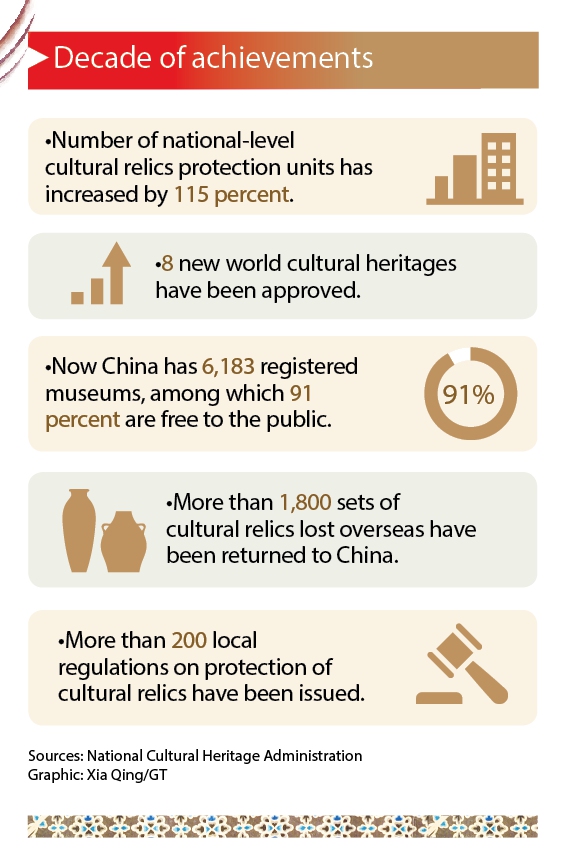
Who is the Communist Party of China (CPC)? What is the CPC's role in the new era?
The CPC has grown into one of the largest parties in the world in the process of leading the Chinese people in seeking liberation and happiness, making China as strong and prosperous as it is today.
As the CPC ushers the nation into a new era of development, the last decade has witnessed great achievements in national strength and prosperity, with people's confidence and recognition of this path rising to unprecedentedly high levels.
With more than 96 million members, the CPC will convene its 20th National Congress in October, which is expected to guide the country's development and policymaking. Ahead of the meeting, the Global Times is publishing a series of stories to help the world understand the CPC in the new era, through the stories of CPC members working on the frontlines of various fields, as well as through observations made by respected scholars.
This installment tells the story of an archaeologist who works on the frontline of the Gobi Desert to study and protect the Mogao Grottoes, a world cultural heritage site, in Dunhuang, Northwest China's Gansu Province, which was not only once an outpost on the ancient Silk Road, but also a rich treasure trove of art and history.
In the last decade, thanks to the favorable policies and modern scientific technologies, the archaeological work in Dunhuang has been greatly supported and developed under the leadership of the CPC.

Mogao Grottoes in Dunhuang Photo: VCG
Zhang Xiaogang has now gotten used to the drought and sand in Dunhuang, even if he grew up in Wuhan, a picturesque river city in Central China's Hubei Province.In 2000, this young man, who had just graduated from university and had never traveled far, joined the CPC less than a year ago, and had no idea that he would be based in one of China's toughest landscapes for so long for archaeological purposes.
Now, looking back, as the director of Archaeology Institute of Dunhuang Academy in Northwest China's Gansu Province, Zhang does not regret his original decision, especially when seeing the progress made in Dunhuang and China's archaeological field in the last decade.
"The flourishing development of Chinese archaeology is worth us pursuing research and conservation work as a lifelong career, no matter where we are, to seek academic breakthroughs, gaining the respect and recognition of the international academic community in our own research fields, and also integrating our life ideals into the cause for the nation, making our due contributions to the great rejuvenation of the Chinese nation," he said.
Achieving brilliance
Zhang still remembers the suffocating feeling of being under the scorching sun and whipped by sandy wind while conducting field archaeological research in the desert. "We often turned into 'dirt man' when we arrived at the excavation sites in less than half an hour - unable to open our eyes, mouth, and nostrils because they were full of sand. But I told myself that this was the norm for my work; I needed to accept such tests and tribulations to get into the role of a real archaeologist and gain experience as soon as possible," Zhang told the Global Times.
At that time, he was determined to stay at Duhuang for three years, and once he made a few academic achievements, he would return to Wuhan to seek other development pats and goals.
Over the next three years, Zhang's down-to-earth attitude and seriousness earned him praise and unselfish guidance from the older ranks of Dunhuang archaeologists such as Fan Jinshi and Peng Jinzhang, which enabled him to progress quicker in his career path and assume more responsibilities.
Dunhuang is home to the Mogao Grottoes, a renowned UNESCO World Heritage Site boasting rich collections of Buddhist artwork - more than 2,000 colored sculptures and 45,000 square meters of murals - in 735 caves along a cliff, which symbolizes the great achievements of China's Buddhist art from the 4th to the 14th century, presenting the cultural integration and mutual learning among the diverse civilizations along the ancient Silk Road.

Zhang Xiaogang in Dunhuang Photo: Courtesy of Zhang
"As I worked with them, I was touched and influenced by their commitment," Zhang said, noting that from the late 1940s, a group of young people, especially members of the CPC, came to the Mogao Grottoes, working tirelessly to promote the protection of the relics and the spread of Chinese culture. For nearly 80 years, generations of archaeologists at the Archaeology Institute of Dunhuang Academy have worked to build a complete archive of the grottoes in Duhuang.In 2011, the first volume of the archaeological reports on the Dunhuang Grottoes was published by Fan, a first-generation archaeologist at the Dunhuang Academy, and her team. It is the first comprehensive Dunhuang grottoes archive in China, providing scientific guidance for the cave restoration of the Mogao Grottoes, and playing an exemplary role in the grottoes' archaeological research circles.
In April 2022, China's National Cultural Heritage Administration issued a special plan for archaeological work during the 14th Five-Year Plan period (2021-25), calling for further publication of archaeological reports on major grottoes such as the Dunhuang, Yungang, and Longmen Grottoes. In Dunhuang, Zhang is leading a relay team to carry out this work.
Spirit passing down
It is a really difficult task. Before a detailed and qualified archaeological report of the Mogao Grottoes can be presented, thousands of Buddha statues of different shapes and styles need to be individually identified and documented by archaeologists while some of the damaged murals require more time to review and verify.
However, Zhang and his team have always weathered the difficulties and tediousness, racing against time but moving forward with the compiling work in a solid and patient manner.
At the Dunhuang Academy, this spirit has been passed on and has fueled the progress, development, and growth of this research institute.
"This is also closely related to the inspiration and leadership of the CPC," Zhang said.
Zhang had served as secretary of the Party branch of the Dunhuang Academy that is in charge of the entire archaeological discipline, exhibition planning, and other operations, in which he has witnessed the selfless dedication of many Party members in various positions to collaborate in the preservation and promotion of Dunhuang's culture.
Zhang always remembers the day when Chinese President Xi Jinping visited Dunhuang in August 2019.
Xi, also the general secretary of the Communist Party of China Central Committee and chairman of the Central Military Commission, called for well preserving the quintessence of Chinese culture.
He stressed the need to help carry forward and promote traditional culture, according to the Xinhua News Agency.
He also called for more efforts in cultural exchanges with other countries and learning from the outstanding achievements of civilizations from around the world.
Dunhuang's culture shows the Chinese nation's confidence in its culture, Xi said. "Only a self-confident civilization can absorb and draw on the achievements of other civilizations while maintaining its own characteristics."
Xi also encouraged workers in the cultural sector to tell the stories of Dunhuang and China well.

The mural of Mogao Grottoes in Dunhuang Photo: VCG
New development in decade
Zhang has also witnessed the rapid development of archaeology at Dunhuang and even throughout China in the last decade.
Zhang cited the digitization of the Mogao Grottoes in Dunhuang as an example, mentioning that in the early 1990s, the Dunhuang Academy began to try to use digital means to preserve the information of the heritage, from the beginning of still depending on manual surveys to the introduction of a US architectural engineering firm's three-dimensional laser scanning technology, to currently, with the support of the Party and state, after several years of development, the Dunhuang Academy's own Institute of Cultural Relic Digitalization has endeavored to solve problems in the process of practice, leading the development of technologies and making innovations.
In the last decade, the academy has developed a scientific set of digital techniques for mural paintings and sculptures, developed 14 technical standards and specifications for the digital protection of cultural relics, and obtained 45 authorized patents. Moreover, over the last decade, the Dunhuang Academy has continued to strengthen the ability to innovate in science and technology, out of a characteristically strong technology cave conservation plan. At the same time, until now, the Dunhuang Academy has continuously carried out various forms of cooperation with more than 30 institutions in more than 10 countries and regions.
For example, the successful experience of archaeological research and heritage conservation in the grottoes is being applied to countries along the Belt and Road Initiative (BRI) route. Through a variety of ways of exchanges, the institute actively offers guidance for professionals in cultural heritage protection from Kyrgyzstan, Afghanistan and other countries, helping enhance the level of protection of cultural relics in these regions. China has attached importance to archaeology and cultural relic protection. The corresponding technologies have been developed rapidly due to increase in demand and fields of application, which has helped the permanent preservation and sustainable use of cultural relics, Zhang said.
Zhang noted that over the last 10 years, the relevant authorities have promulgated policy documents and work plans on China's archaeological research and the protection and utilization of cultural relics, and continued efforts to increase the training of relevant professionals and support the establishment of special archaeological research projects.
"Currently, archaeology has become a popular major in colleges, and in every graduation season, cultural relics protection units start a competition for attracting talent," Zhang said, adding that among the projects applying for the support of the Chinese National Social Science Foundation this year, a large number of projects related to archaeology have been approved.
"This industry is ushering in a golden age of development," he said.

GT
